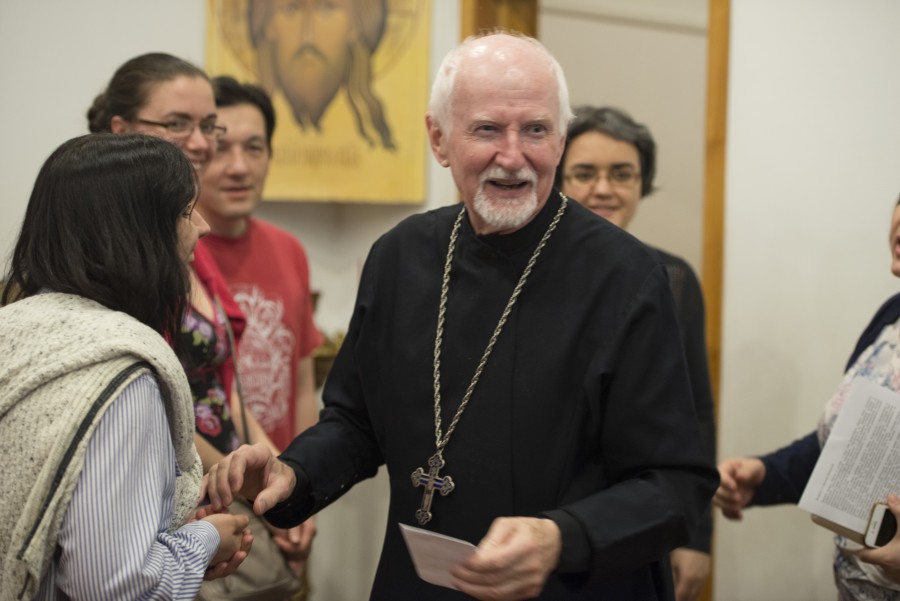Archpriest John H. Erickson: The Pandemic Urges the Church to Renew its Intentions

“Before the pandemic, during “normal” times, we did many things out of habit. We may have gone to church and received communion and given to charity, but we did so with little reflection on what all this meant. We were spiritually lazy. Now, what was habitual must again become intentional”. Archpriest John H. Erickson shared his reflections on church and ministries during this pandemic year.
The year 2020 will long be remembered as the year of the Covid-19 pandemic. By the time it runs its course, the pandemic may well have killed many hundreds of thousands world-wide. But the pandemic will not be remembered in the same way everywhere always and by all. Memory of it may even be repressed. That sort of thing has happened in the past. In the United States, the great influenza pandemic of 1918 has been described as the forgotten pandemic. It was forgotten because government censorship tried to keep any mention of it out of the press lest this undermine popular support for the nation’s involvement in World War I. I cannot speak of the impact of the Covid-19 pandemic on Russia or other countries in which Orthodoxy is the dominant or traditional faith, nor can I speculate on how it will be remembered in these countries, much less elsewhere. I can, however, offer some reflections on the impact of the pandemic on Orthodox Christians in North America.
The questions proposed for discussion during this 30th anniversary celebration of the Transfiguration Brotherhood refer to the role of communities and brotherhoods in the church and society. These questions are hard for me to answer because in North America we have little experience of the kinds of communities and brotherhoods exemplified in Russia by the Transfiguration Brotherhood. We do have various institutions and organizations that have filled some of the same functions: theological schools, pastoral institutes, professional organizations, theological societies, religio-philosophical discussion groups. But for Orthodox Christians in North America, these institutions and organizations are relatively unimportant. Our experience of the church has been formed largely by the parish.
It is difficult, however, to generalize about the Orthodox parish in America. In our notably pluralistic society, Orthodox Christians are a small and easily overlooked minority. No overarching ecclesial structure ties them together. Instead, multiple overlapping “jurisdictions” – the Greek Orthodox Archdiocese, the Antiochian Archdiocese, the Orthodox Church in America, and many others – have parishes scattered across the continent. Some of these parishes have a distinctly ethnic flavor, others are notably pan-Orthodox. Some are quite large, others are tiny. Nearly all include at least a few converts to Orthodoxy in their membership, and some are comprised almost entirely of converts. Yet despite their many differences, historically these parishes have shared at least two characteristics. One – almost too obvious to mention – is parochialism, that is, preoccupation with the parish and its finances rather than with the wider community. Another has been an unhealthy struggle between clergy and laity for dominance in parish life.
During the Covid-19 pandemic, parishes in North America have faced unprecedented challenges. By Holy Week of 2020, every Orthodox jurisdiction had imposed restrictions on the usual routines of public worship, in accordance with the recommendations of epidemiologists and the mandates of civil authorities. Various hygienic measures were introduced. Attendance at services was strictly limited. But despite considerable grumbling, most parishes adjusted fairly quickly. In the temple itself, the priest, altar servers and singers coordinated their church attendance to meet public health guidelines. They were joined behind the locked doors of the temple by a videographer so that services could be streamed live over the internet. This virtual worship was supplemented by online liturgical texts for readers’ services in the home. Committee meetings, Bible study, discussion groups and church school classes gathered via Zoom. Special arrangements were made for confession and for reception of communion. While the reopening (or sometimes reclosing) of temples has depended on epidemiological factors, at every phase this reopening cohorts of competent and well-prepared doorkeepers, greeters and ushers have dispensed hand-sanitizer, managed traffic flow, and tactfully reminded worshippers of the need for distancing. To put all this in simpler terms: (1) parishioners have discovered that worship is not something confined to the church building, and (2) they have become actively involved in ministries for which priests, deacons and other church “professionals” have little time, training or aptitude.
In the course of the pandemic, Orthodox Christians – both clergy and laity – have had to reconsider not only their mutual relationship but also their relationship to the wider world, the world beyond the walls and often-locked doors of the temple. Media call to our attention plight of the homeless, the anxieties of those who have lost their job, the stresses faced by healthcare workers, the loneliness of the homebound elderly and infirm, the special needs of the disabled. We are challenged to set aside any notions our own self-sufficiency. But this is not easy to do. Before the pandemic, during “normal” times, we did many things out of habit. We may have gone to church and received communion and given to charity, but we did so with little reflection on what all this meant. We were spiritually lazy. Now, what was habitual must again become intentional. What was taken for granted must be recognized and received as a gift of grace.